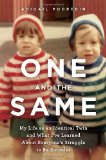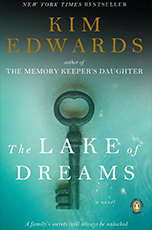Book Reveiw: One and the Same
 By Abigail Pogrebin
By Abigail Pogrebin
Doubleday ©2009 | Hardcover 288pgs
Journalist and identical twin Abigail Pogrebin offers a fascinating glimpse into the relationship between twins and how it impacts the need for individuality in One and the Same: My Life as an Identical Twin and What I’ve Learned About Everyone’s Struggle to Be Singular. Twins, especially identical twins, are often seen as special, at times almost a novelty, in our society. The duo is bestowed with a unique “star power” that draws levels of attention few singletons experience. Such was especially true for Abigail and sister Robin who grew up loving to sing and perform, excelling academically (both graduating from Yale), and achieving successful careers in journalism.
Their sameness has been an intense bond throughout their lives, though both women have had periods when the desire to be an individual caused one to pull away from the other. Abigail experienced this as a teenager, while Robin’s need for distance is more recent. This distance was one of the forces that drove Abigail to write this book. If she could gain insight into the complex dynamics between other sets of twins, perhaps she could gain insight into her own twin relationship, and herself as an individual. “Twins come with a built-in constant comparison, but defining oneself against one’s twin is just an amped-up version of every person’s life-long challenge: to individuate – to create a distinctive persona in the world.”
Abigail interviews several sets of twins and examines their individual relationships. Some sets, like identical twins and NFL stars Tiki and Ronde Barber, draw strength and inspiration from each other. The spirit of sibling competition drives each man to perform at his best, but never spills over to jealousy or bitterness. While other sets seem to be driven apart by their sameness. One elderly twin has refused to speak to her sister for years because of their acrimonious relationship, though she reluctantly admits she’d feel lost if her sister died. In happiness or anger, there is still a deep connection between two souls, and Abigail ponders its root. “Could it really start in utero? My gut says yes…Robin and I were smushed together for nine months; I can’t believe there’s no emotional trace of that snug cohabitation.”
But how can two people so intensely linked grow as individuals? From birth twins are treated as a matching set, two parts of the same whole, always expected to agree and get along. Abigail feels that parents who always spend time with their twins together, instead of making a conscious effort to interact with them separately, are doing the children, and themselves, a disservice. The lack of one-on-one time means the twins have less of a chance to develop unique identities, and the parents have less of an opportunity to bond with their children individually. The unrealistic expectation that twins should never fight or disagree can also impact individuality. Because twins are socialized to get along at a very young age, conflict between the two is often discouraged. When faced with an argument, one or both may shy away from harsh honesty or negative emotions in order to protect the other’s feelings, and conform to the twins stereotype.
Abigail also consults with “the experts”, a group of physicians, psychologists, geneticists, philosophers, etc., to explore the science of twins and examine their relationships. Having a double presents unique challenges in paving one’s own path in life, but despite these challenges, the author admits that identicals appreciate their specialness and feel their relationship is “slightly superior to the fraternal brand.” Yet, this twin relationship can be intensely close at the exclusion of anyone else. When talking to their mother, Abigail becomes aware that sometimes the sisters can become so engrossed in conversation that they virtually ignore family and friends. They are not consciously trying to alienate anyone, but the twin relationship takes such primacy that it can result in unintentionally hurt feelings.
One and the Same provides thoughtful and thoroughly interesting portraits of twins and their unique relationships. Like the author herself, the reader comes away with “confirmation that twins, despite their recent ubiquity, still fascinate and confound…[and] will always play a key role in decoding what differentiates all of us.” This extraordinary and powerful bond between two people is heartbreakingly illustrated by the last twins interviewed in the book. During World War II, sisters Helen Rapaport and Pearl Pufeles were imprisoned at Auschwitz, and forced to be a part of Josef Mengele’s obscene study of twins. As the approach of American troops became imminent, the camp was closed and the pair was forced on a death march with the remaining ambulatory prisoners. For months they walked, cold, starving, sick, dressed in rags, but encouraging each other to keep going. “‘We survived together,’ Pearl goes on with wet eyes. ‘So we have two of us. We were never separated…So we’re lucky.’”

